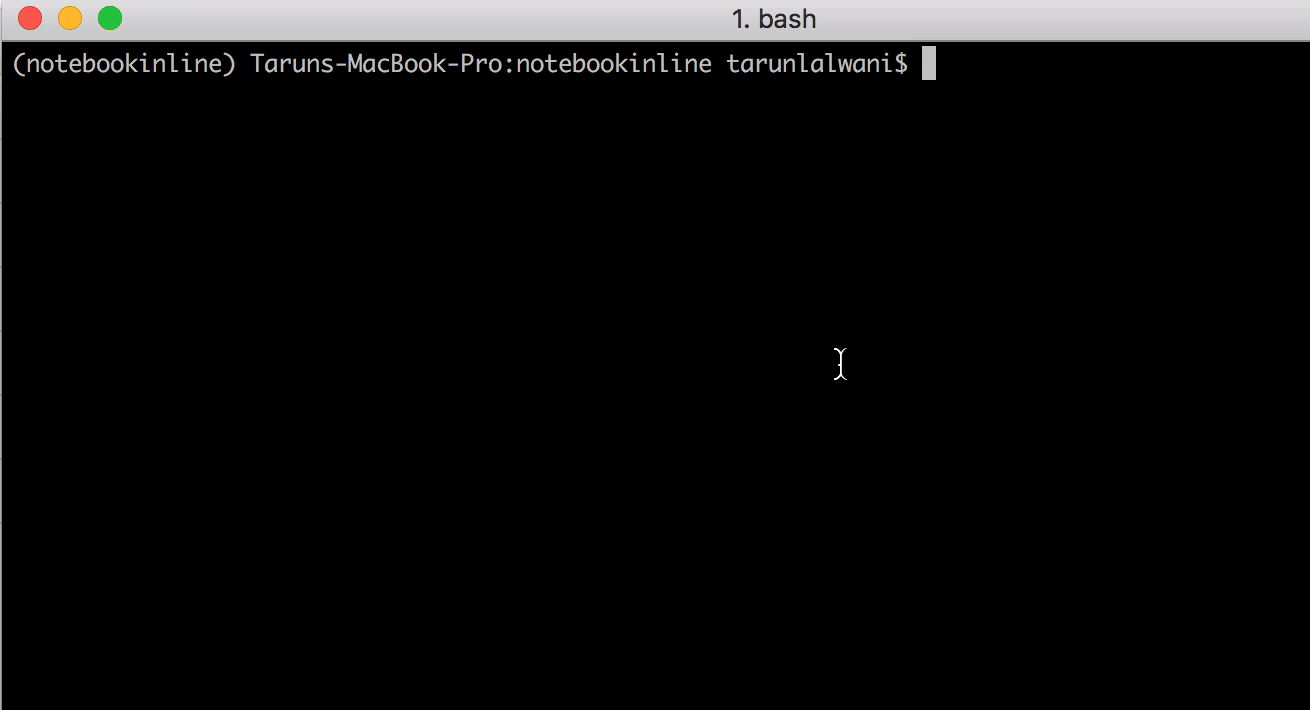Automatically run %matplotlib inline in IPython Notebook
The configuration way
IPython has profiles for configuration, located at ~/.ipython/profile_*. The default profile is called profile_default. Within this folder there are two primary configuration files:
ipython_config.pyipython_kernel_config.py
Add the inline option for matplotlib to ipython_kernel_config.py:
c = get_config()# ... Any other configurables you want to setc.InteractiveShellApp.matplotlib = "inline"matplotlib vs. pylab
Usage of %pylab to get inline plotting is discouraged.
It introduces all sorts of gunk into your namespace that you just don't need.
%matplotlib on the other hand enables inline plotting without injecting your namespace. You'll need to do explicit calls to get matplotlib and numpy imported.
import matplotlib.pyplot as pltimport numpy as npThe small price of typing out your imports explicitly should be completely overcome by the fact that you now have reproducible code.
I think what you want might be to run the following from the command line:
ipython notebook --matplotlib=inlineIf you don't like typing it at the cmd line every time then you could create an alias to do it for you.
The setting was disabled in Jupyter 5.X and higher by adding below code
pylab = Unicode('disabled', config=True, help=_(""" DISABLED: use %pylab or %matplotlib in the notebook to enable matplotlib. """))@observe('pylab')def _update_pylab(self, change): """when --pylab is specified, display a warning and exit""" if change['new'] != 'warn': backend = ' %s' % change['new'] else: backend = '' self.log.error(_("Support for specifying --pylab on the command line has been removed.")) self.log.error( _("Please use `%pylab{0}` or `%matplotlib{0}` in the notebook itself.").format(backend) ) self.exit(1)And in previous versions it has majorly been a warning. But this not a big issue because Jupyter uses concepts of kernels and you can find kernel for your project by running below command
$ jupyter kernelspec listAvailable kernels: python3 /Users/tarunlalwani/Documents/Projects/SO/notebookinline/bin/../share/jupyter/kernels/python3This gives me the path to the kernel folder. Now if I open the /Users/tarunlalwani/Documents/Projects/SO/notebookinline/bin/../share/jupyter/kernels/python3/kernel.json file, I see something like below
{ "argv": [ "python", "-m", "ipykernel_launcher", "-f", "{connection_file}", ], "display_name": "Python 3", "language": "python"}So you can see what command is executed to launch the kernel. So if you run the below command
$ python -m ipykernel_launcher --helpIPython: an enhanced interactive Python shell.Subcommands-----------Subcommands are launched as `ipython-kernel cmd [args]`. For information onusing subcommand 'cmd', do: `ipython-kernel cmd -h`.install Install the IPython kernelOptions-------Arguments that take values are actually convenience aliases to fullConfigurables, whose aliases are listed on the help line. For more informationon full configurables, see '--help-all'.....--pylab=<CaselessStrEnum> (InteractiveShellApp.pylab) Default: None Choices: ['auto', 'agg', 'gtk', 'gtk3', 'inline', 'ipympl', 'nbagg', 'notebook', 'osx', 'pdf', 'ps', 'qt', 'qt4', 'qt5', 'svg', 'tk', 'widget', 'wx'] Pre-load matplotlib and numpy for interactive use, selecting a particular matplotlib backend and loop integration.--matplotlib=<CaselessStrEnum> (InteractiveShellApp.matplotlib) Default: None Choices: ['auto', 'agg', 'gtk', 'gtk3', 'inline', 'ipympl', 'nbagg', 'notebook', 'osx', 'pdf', 'ps', 'qt', 'qt4', 'qt5', 'svg', 'tk', 'widget', 'wx'] Configure matplotlib for interactive use with the default matplotlib backend.... To see all available configurables, use `--help-all`So now if we update our kernel.json file to
{ "argv": [ "python", "-m", "ipykernel_launcher", "-f", "{connection_file}", "--pylab", "inline" ], "display_name": "Python 3", "language": "python"}And if I run jupyter notebook the graphs are automatically inline
Note the below approach also still works, where you create a file on below path
~/.ipython/profile_default/ipython_kernel_config.py
c = get_config()c.IPKernelApp.matplotlib = 'inline'But the disadvantage of this approach is that this is a global impact on every environment using python. You can consider that as an advantage also if you want to have a common behaviour across environments with a single change.
So choose which approach you would like to use based on your requirement
